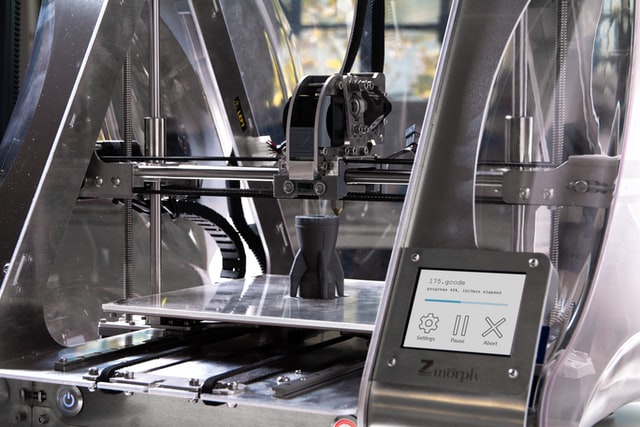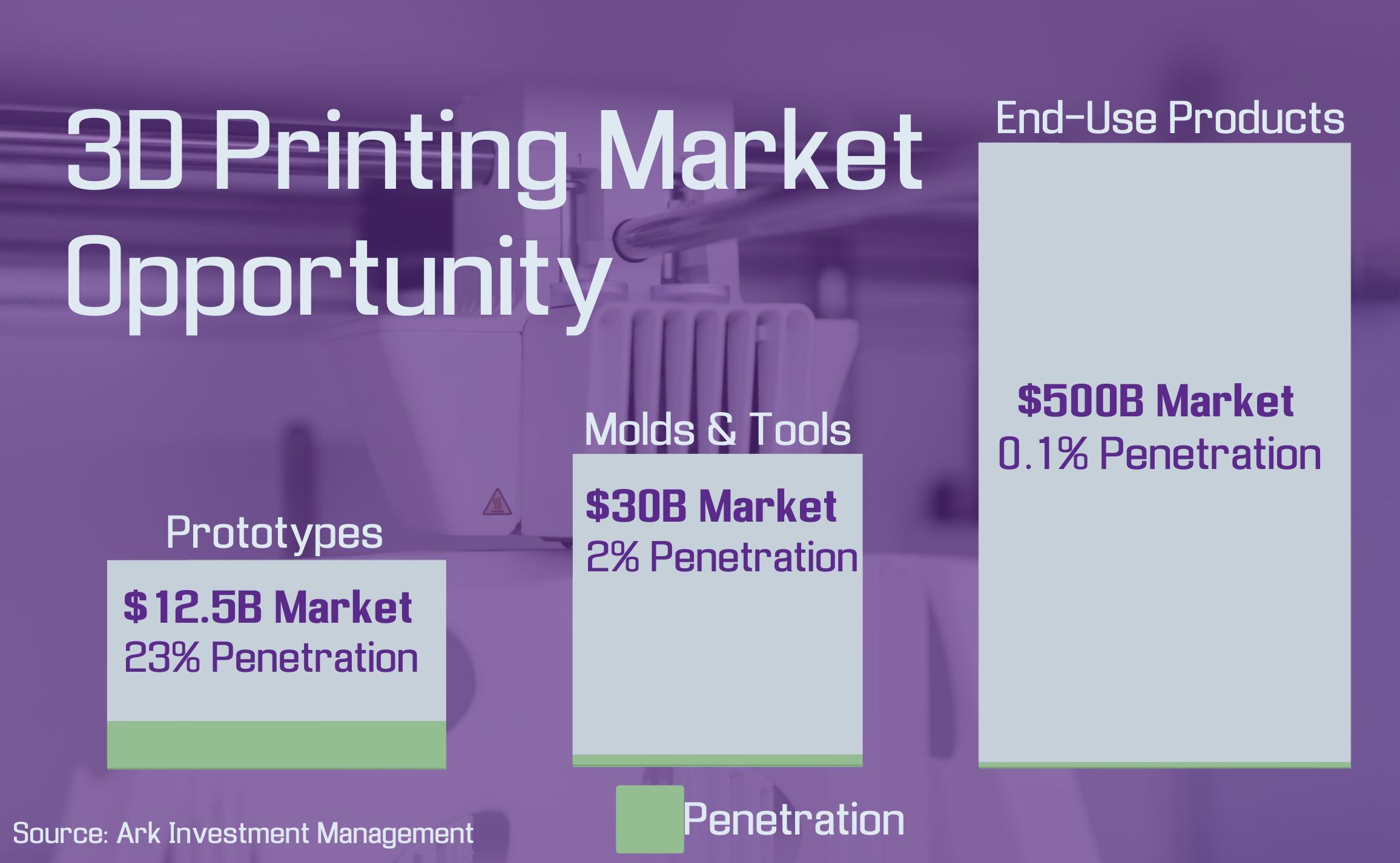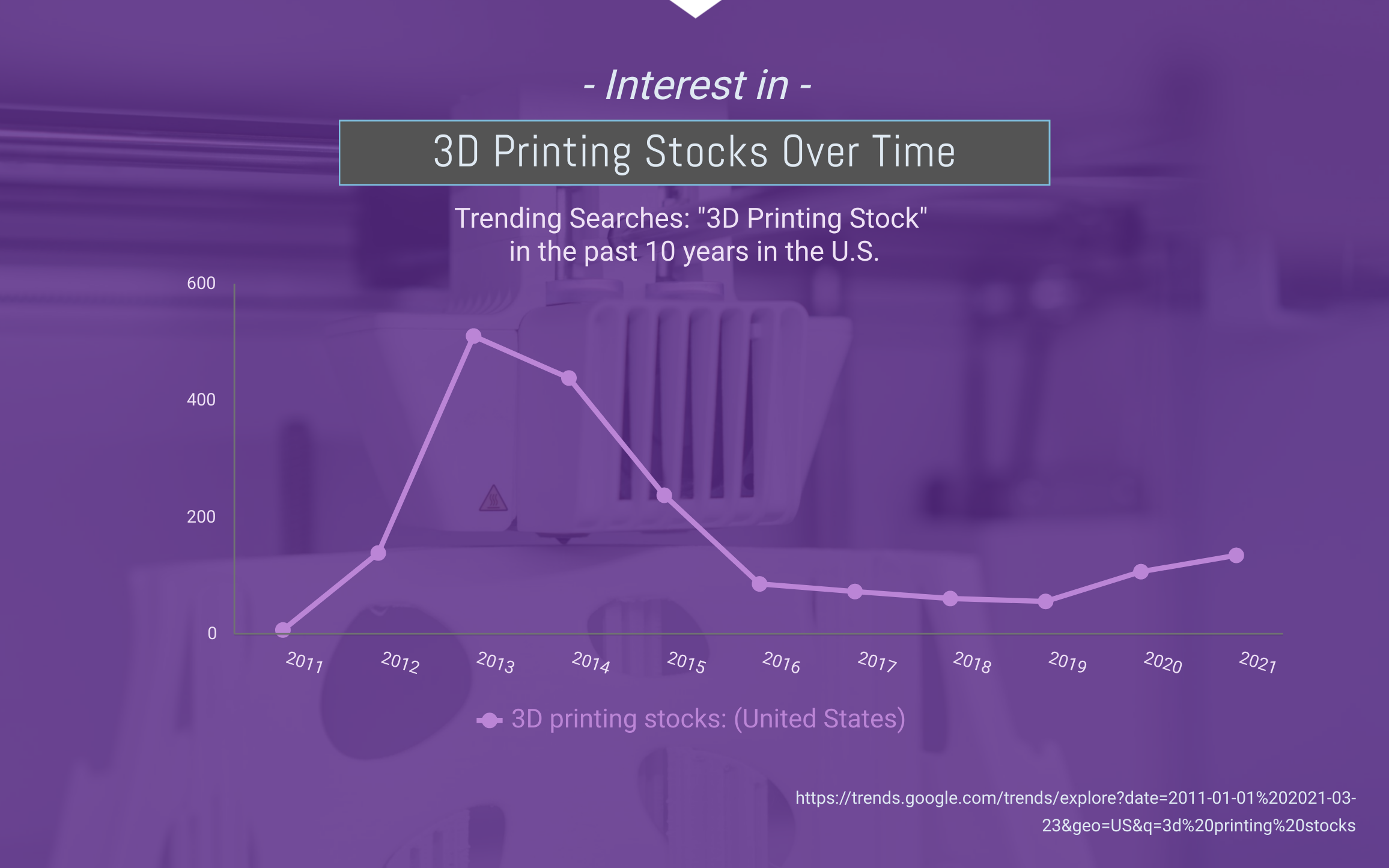
What is 3D Printing?
3D printing, or additive manufacturing, is a technology that lets you print a 3d object from a digital design. In the early days, the result was usually a weak plastic end product. Now, a broad array of materials can be used in 3D printing, and objects of tremendous quality and structure can be printed. There are a number of companies that are publicly traded which are involved in innovating this technology, and I believe we are in the early stages of a tremendous growth cycle. Let’s dive in.
The Rise and Fall
In 2013 and 2014, 3D printing was all the rage. Between 2010 and 2014, shares of market share leader 3D Systems (DDD) flew nearly 800% on the promise of an explosion of 3D printer sales. I am using DDD as a representation of the whole industry for simplicity. The vision back then was largely a consumer-driven story. The idea was that there would be a 3D printer in every household. Unfortunately, this vision never took hold and low-cost competitors took over the consumer 3D printing market. Shares of 3D systems plummeted from a high of $97.28 in early 2014 to a low of $6 in early 2016. Since then, this particular stock trickled lower and reached a new low of $4.60 in September of 2020. During this time of awful stock performance, the industry went through a major period of restructuring. While the consumer market was not to be, there was still massive potential for 3D printing to have a big impact on manufacturing.
Want to learn how we invest in 3D printing for our clients? Click below.
The Comeback
3D printing companies have largely focused their efforts on reimagining manufacturing. Now the potential looks promising. 3D printing has major advantages over traditional manufacturing. The benefits include shorter lead times, simple supply chains, fewer parts, and more customization. Let’s use an example to illustrate the benefits.
Terran Rocket
Relativity Space built a factory and integrated the world's leading 3D printing technology to produce the world's first 3D printed rocket. According to Relativity, a typical rocket has up to 60,000 parts and takes up to 2 years to build. The Terran rocket can be built in 60 days and used only 730 parts, all created and assembled in the same factory. If we think about how these advantages can be applied to other and more simple industries, we can start to understand how big the opportunity is.
Markets
Just think about all the markets that 3D printing can revolutionize. There's aerospace and defense, machinery, textiles, apparel, luxury goods, automotive, healthcare, and much more. And increasing competition in the space only means lower prices and ultimately more adoption. This is why Ark Invest expects the market to be worth a whopping $97 billion dollars in 2024, from just $10 billion in 2018. Ark, known by some to have quite lofty predictions, is conservative compared to McKinsey who predicts a $180 to $490 billion dollar 3D printing market by 2025!
3D printing right now is still dominated by the prototyping market. The benefit here is clear. Quicker turnaround, cheaper, and less waste than traditional manufacturing methods. According to Ark Invest, this is about a $12.5 billion dollar market. 3D printing is also penetrating injection and cast molding applications. This potential market size is around $30 billion globally by Ark’s estimates. The golden opportunity, however, is the finished product market. This a $500 billion dollar opportunity, comprised of non-consumer products and consumer products as seen below.

Investment Opportunities
When you think of 3D printing, you may think of just the printer itself. But there are opportunities in the companies that are investing in what comes before and after.
Materials Companies
There are companies that are supplying the materials like Alcoa, Eastman Chemical, or PolyOne. These companies will be important partners in the 3D printing renaissance.
Scanning and Measurement Companies
When you run a factory with a process and want to investigate if some or even all of the process can be transitioned to 3D printing, then you would hire a 3D scanning company, like FARO, to turn the physical object into a 3D model.
CAD Simulation and Software Companies
Have a new idea for a product you want a quick prototype for? Then you would use computer-aided design software, offered by companies like Autodesk, to design your prototype.
Printer Manufacturers
Ready to print? Now you can turn to one of the companies that actually produce the printers, such as 3D Systems or Stratasys.
Service Centers
Companies like Protolabs can take a product idea from idea, design, prototype, all the way to production for you. This may make sense for companies with limited resources who cannot afford to do or don’t have the know-how to do it in-house.
End Products
Companies that maximize the use of 3D printing to make end products more useful, cheaper, and are able to adapt quickly to market trends should benefit from 3D printing. I’m thinking of a company like Nike. If they are 3D printing shoes, for instance, the turnaround time to be able to create what the market demands in a short time will enable them to reap the financial benefits.
An Example of Accelerating Innovation
A company named Stratasys (SSYS), another longtime market incumbent, recently announced a new printer to be able to produce dental implants. Sounds cool, right? Well, dental implant models were already being 3D printed, but as Stratasys mentions, the complexity of the implants meant that technicians often had to use multiple printers with different materials, and the process would still be time-intensive. Stratasys’s new printer solves pain points that already existed, and can print full implants up to five times faster than the competition. It can even print several models at one time.
Sticking with the dentistry example, we can see how using 3D printing technology is beneficial to the patient as well as the practitioner. According to Dr. Angela Evanson, DDS, running an in-house lab can cost $100,000 to start and up to $100,000 per year. A 3D printer is a one-time cost around $20k and is easy to operate. The patient also benefits from fewer office visits, more accurate implants, and more affordable care as office savings are passed on to the patient.
Just the Beginning
The 3D printing revolution is just getting started. It is going to transform manufacturing across several industries and play a huge role in the next industrial revolution. It is going to help bring manufacturing back to the United States and away from overseas. It will be important for national security, the national supply chain of critical products, and increase the country's strength while avoiding cheap labor overseas. To me, the coming 3D printing renaissance will be the biggest renaissance in manufacturing since Henry Ford created the assembly line.
The early hype in 3D printing led to too much money chasing an idea was not to be. The stocks that are pure-plays in this space have performed terribly in a multi-year consolidation pattern, and now the fruits of their investment should pay off over the next several years. There are signs that a period of growth is about to begin.
At DeWitt, we are keeping a close eye and investing in this theme. After being left for dead for years, the stocks involved in 3D printing have begun to wake up as fruits of the restructuring labor are beginning to be felt. Please reach out to us if you are interested in learning more about how we use a risk-managed process to invest in the 3D printing space for individual investors and instutions.
Want to learn how we invest in 3D printing for our clients? Click below.
P.S. Even Google Searches are ticking up!

Disclosures: The commentary on this website reflects the personal opinions, viewpoints, and analyses of the DeWitt Capital Management employees providing such comments, and should not be regarded as a description of advisory services offered by DeWitt Capital Management or performance returns of any DeWitt Capital Management client.The views reflected in the commentary are subject to change at any time without notice. Nothing on this website constitutes investment advice, performance data, or any recommendation that any particular security, portfolio of securities, transaction, or investment strategy is suitable for any specific person. Any mention of a particular security and related performance data is not a recommendation to buy or sell that security. DeWitt Capital Management manages its clients’ accounts using a variety of investment techniques and strategies, which are not necessarily discussed in the commentary. Investments in securities involve the risk of loss. Past performance is no guarantee of future results.
We Deliver Content Like This Every Month to Your Inbox. Sign Up to Start Receiving Updates
Related Posts
February in Review and a Look Forward
February Market Performance in a Nutshell
Bye Bye 2020, Hello 2021: Year in Review and 2021 Outlook
December performance capped off an epic year
In December, all the broad equity indices reported a...
Has this Been a Healthy Market Rally?
More than 38 million Americans have lost their jobs, and the S&P 500 is up 5% over the last twelve...


